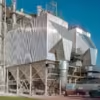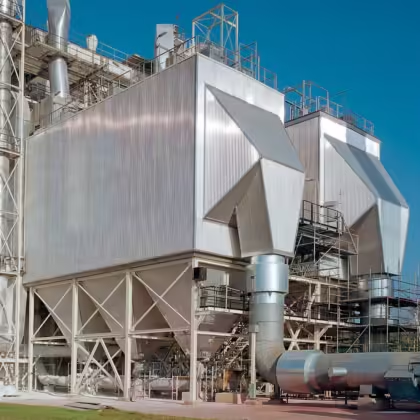Sulfuric acid scrubber
A sulfuric acid scrubber is a gas treatment system designed to neutralize and remove sulfuric acid (H₂SO₄) from industrial exhaust streams. It utilizes a scrubbing liquid to capture the acid and convert it into non-harmful substances.
Technical Points:
– Mechanism:
Utilizes absorption and neutralization processes where sulfuric acid reacts with water or an alkaline solution (e.g., sodium hydroxide).
– Design:
Typically consists of a packed bed or spray tower to maximize gas-liquid contact for efficient absorption.
– Efficiency:
Effective at removing sulfuric acid aerosols and vapors, achieving high removal efficiency (>90%).
– Liquid Regeneration:
In some cases, scrubbing liquid is regenerated or replaced to maintain efficiency and reduce waste.
– Material Compatibility:
Scrubber components must be resistant to corrosion due to the acidic nature of the sulfuric acid.
A sulfuric acid scrubber is a pollution control device designed to remove sulfuric acid (H₂SO₄) fumes or aerosols from industrial exhaust gases. It uses a scrubbing liquid, often water or an alkaline solution, to neutralize and remove the acid.
Key Points:
Purpose: Removes sulfuric acid fumes from gas streams.
Components: Packed bed, scrubbing liquid (water or alkaline solution), gas inlet/outlet.
Operation: The gas passes through the scrubber, where sulfuric acid reacts with the scrubbing liquid, neutralizing the acid.
Applications: Used in chemical manufacturing, power plants, and industries producing or using sulfuric acid.
Advantages: Effective at preventing acid emissions and protecting equipment.














